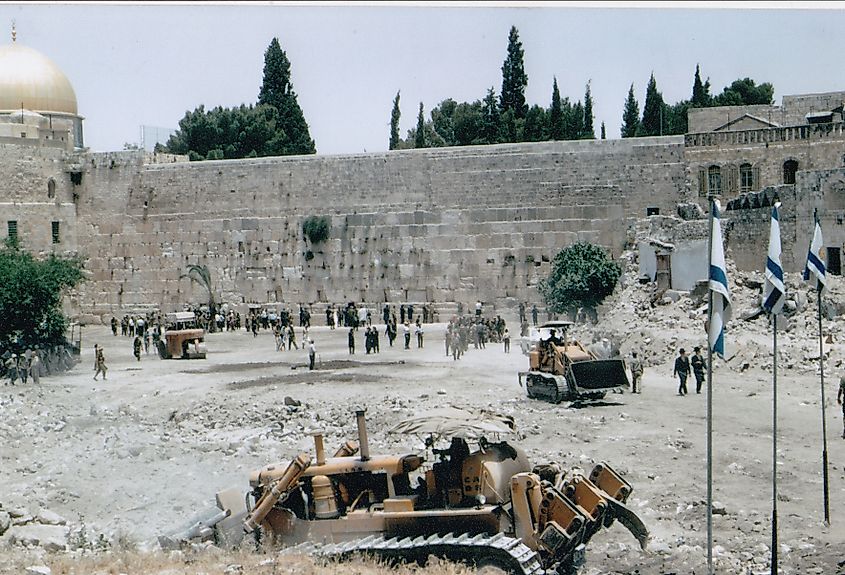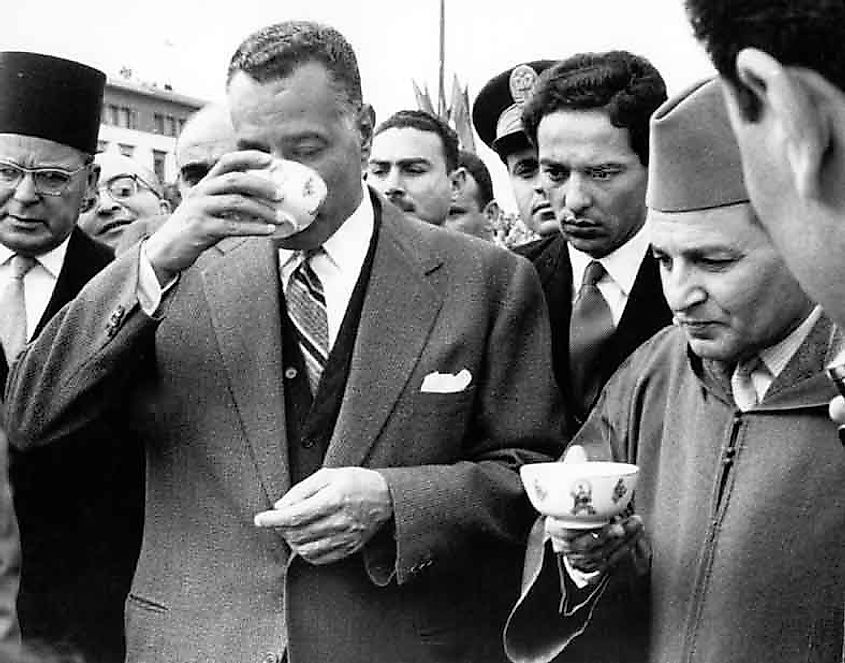
Why is East-Jerusalem Important to the Israel-Palestine Conflict?
The location of crucial religious sites for the world's three major monotheisms, East Jerusalem is important to billions of people. This religious significance has helped make it one of the most relevant components of the Israel-Palestine conflict. Nonetheless, religion is not the only reason why ownership of East Jerusalem remains a contentious issue. Indeed, the many wars and uprisings in Israel and Palestine during the 20th and 21st centuries have imbued these religious disagreements with political and historical grievances.
Religious Significance

East Jerusalem contains key religious sites for Jews, Muslims, and Christians. The location of many of these sites is the Temple Mount, a hill in the Old City. On it sits the Al-Aqsa Mosque, at the center of which is the Dome of the Rock. The third holiest site in Islam, it is where many Muslims believe that Mohammad ascended to heaven. The Temple Mount also contains Judaism’s holiest site, the last remaining retaining wall for the Second Temple, known as the Western Wall. Finally, blocks away is the Church of the Holy Sepulchre, where many Christians believe that Jesus was crucified, buried, and resurrected. With all these different religious sites in such close proximity, there have been many disagreements over ownership of the Old City, and East Jerusalem more generally. Political and historical factors have often exacerbated these disagreements.
The Wars of the Late 1940s

In the first half of the twentieth century, thousands of Zionists moved to Palestine to establish a Jewish homeland. International sympathy towards Zionism after the Holocaust then resulted in the United Nations (UN) supporting the creation of a Jewish state in Palestine. This proved problematic due to the pre-existing Arab population. Therefore, the UN created a partition plan. The Jewish state was to consist of 56% of Mandate Palestine, the Arab state 42%, and the remaining two percent, Jerusalem, was to be controlled internationally. However, a lack of on-the-ground enforcement of this plan set the stage for violence, leading to a civil war between the Arab and Jewish populations in 1947-1948. Once the war ended in May 1948, Israel declared its independence. This was immediately followed by the nearby Arab countries of Egypt, Lebanon, Jordan, Syria, and Iraq all invading Israel. Despite Israel winning the war in 1949 and occupying 78% of the territory of former mandate Palestine, East Jerusalem ended up under Jordanian control.
The Six-Day War

The 1967 War (also known as the Six-Day War) had major implications for control over East Jerusalem. Emerging out of tensions caused by lingering grievances regarding the Suez Crisis, fears concerning water insecurity, and the Arab Cold War, the Six Day War saw Israel launch a pre-emptive surprise attack on Egypt in response to Egyptian President Gamal Abdel Nasser closing the Straits of Tiran. The Israeli forces overwhelmed the Egyptians by attacking key military bases and airfields, capturing the Sinai Peninsula in the process. The Jordanians and Syrians, who declared war on Israel due to fears of potential political consequences for not defending Egypt, also proved ineffective. Indeed, Israel captured the Syrian-controlled Golan Heights, Egyptian-controlled Gaza and the Sinai Peninsula, and Jordanian-controlled West Bank, Crucially, Israel also occupied East Jerusalem, which would be a source of significant future consternation.
Tensions from the 1980s Onwards

In 1980, the Knesset (the Israeli Parliament) formally declared sovereignty over East Jerusalem. Issues regarding ownership again came to the forefront during the First Intifada, when King Hussein of Jordan, despite relinquishing his claim over the West Bank, maintained it over East Jerusalem. East Jerusalem also factored into the Oslo Accords (1993), which began a so-called "peace process" between Israel and Palestine. Among other things, the Accords led to the division of the West Bank into three zones, Areas A, B, and C. Area A was given over completely to the Palestinian Authority, Area B was governed jointly by the Israelis and Palestinians, and Area C, which made up 60% of the West Bank, was controlled by Israel. As for East Jerusalem, it stayed under Israeli control, angering many Palestinians.
This anger culminated in 2000. After a half-decade of stalled progress, both the Israelis and Palestinians were disillusioned with the peace process. Thus, when Ariel Sharon, then the leader of the opposition to the Israeli government, visited the Temple Mount in September 2000, a politically and religiously charged event was made even more fraught by the recent history. Sharon was met by protests which escalated to violence. The violence soon spread across the West Bank and Gaza, marking the beginning of the Second Intifada. While this uprising ended in 2005, the East Jerusalem situation remained largely unchanged. Indeed, the Israeli disengagement from Gaza in the summer of 2005, done in response to the Second Intifada, was difficult practically and costly politically. This made many doubt the feasibility of ending the occupation of the West Bank. Today, most of the international community considers East Jerusalem to be occupied territory.
Conclusion

East Jerusalem is central to the Israel-Palestine conflict. The location of key religious sites for the world's three major monotheistic religions, disagreements over ownership were perhaps inevitable. However, when combined with historical animosity stemming from the creation of the state of Israel and the occupation of the West Bank and Gaza, East Jerusalem has become a powder keg from which violence often emerges.











